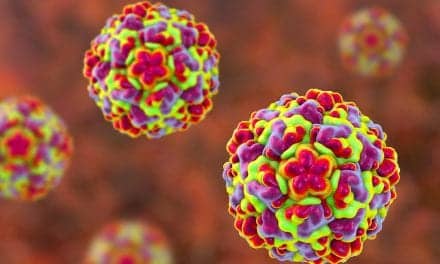
Two faces of the common cold. The protein coat of the “missing link” cold virus, Rhinovirus C (right), has significant differences from the more observable and better studied Rhinovirus A. Photo Courtesy of the University of Wisconsin-Madison.
Rhinovirus C, a pathogen believed to be responsible for up to half of all childhood colds and a serious complicating factor for respiratory conditions, is “quite different” from other cold viruses, according to scientists at the University of Wisconsin-Madison who constructed a meticulous topographical model of the capsid or protein shell of the cold virus. These differences explain most of previous failures of drug trials against rhinovirus, according to the team.
The UW-Madison model means drugs could be designed to effectively cure the common cold, according to researchers.
Unlike the A and B strains of cold viruses, rhinovirus C resists culturing and escaped notice entirely until 2006 when “gene chips” and advanced gene sequencing revealed it was lurking in human cells alongside the more observable A and B virus strains.
Drawing on advanced bioinformatics and the genetic sequences of 500 rhinovirus C genomes, the UW-Madison researchers built a model of the C strain virus “in silico” (using a computer), providing three-dimensional coordinates of the viral capsid.
“It’s a very high-resolution model,” said UW-Madison biochemistry professor Ann Palmenberg, PhD, whose group along with a team from the University of Maryland was the first to map the genomes for all known common cold virus strains in 2009. “We can see that it fits the data.”
The surface features of rhinovirus C that allow it to dock with host cells and evade the immune system are different from those of rhinovirus A and B. Because all three cold virus strains contribute to the common cold, drugs developed to work against only the A and B strains of cold virus proved ineffective.









